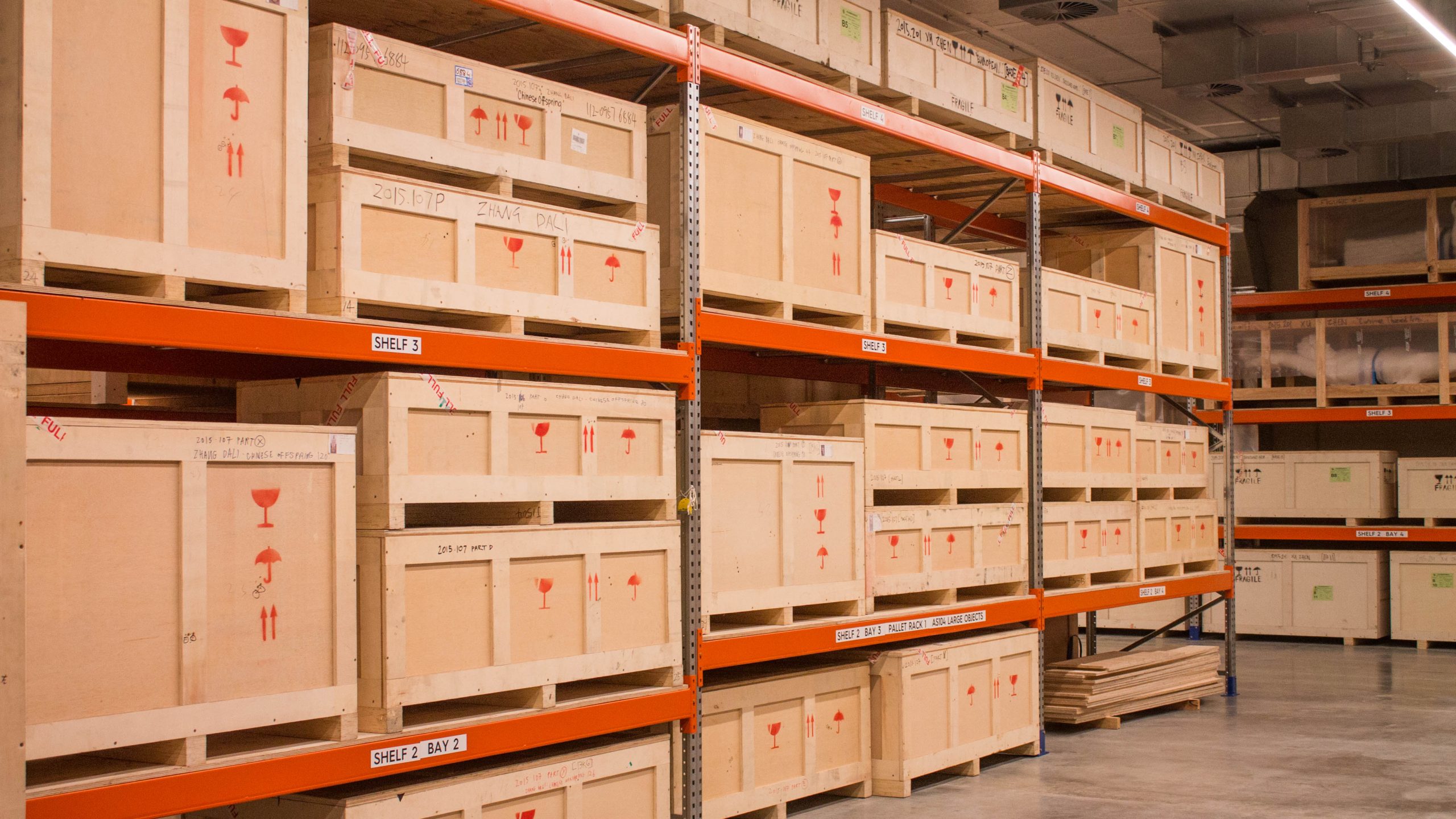
29 Jun Art Storage: A Quick Guide
If you’re a gallery owner or art collector, there will come a time when artworks need to be stored away to make room for new ones. This is not always an easy task – artworks have a unique set of needs that makes their safe storage a little more complicated than your average household item.
While obvious threats such as scraped frames are certainly a big risk when it comes to art storage, other elements such as humidity, light, and dust can also cause damage.
Your artworks are worth thousands of dollars, so when it’s time to store your pieces, it’s absolutely necessary to do it right.
Here’s what you need to know to pack and store your artworks safely.
How to prepare your art for storage
Clean your art with a microfibre cloth to remove dust from any hard surfaces. Consider using a wood or metal polish to stop dust particles or rust from settling on your art.
While packing up framed artworks, make sure you use cardboard corners to protect the frame. POD Services use polyethylene foams which provide shock absorption and vibration absorption. These types of foams also do not degrade and release potentially damaging gas.
The best wrapping technique will differ depending on the characteristics of your piece. It’s best to consult with a professional art storage service such as POD Services to ensure you’re using the right materials for preserving your artwork.
Moving your art to a storage facility
The moving part is the riskiest stage in the art storage process. Particularly if your piece is heavy or irregularly shaped. These characteristics will determine how many people need to be involved in the move, as well as what equipment will be needed during the process.
Art storage experts POD Services collection service team have extensive training and experience in the safe handling of gallery collection objects.
Storing your art
Many materials used for storing fine art can actually cause damage to certain items, especially artifacts made from materials susceptible to corrosion, discoloration, or deterioration.
Paintings and works on paper are particularly sensitive to direct light, so it’s important to store them in a way that will protect them without sealing in heat. At POD Services, we use museum-grade crates which provide the highest level of climate control and protection.
Museum standard crates have multiple levels of insulation, and provide the highest level of climate control and protection. The crates we use at POD Services are made from kiln-dried timber supplied from an F.S.C and ISPM 15 certified timber mill.
While in storage, the best materials used to protect or support your objects may include:
- Acid-free tissue paper
- Melinex sleeves
- Polyethelene foams such as Zotefoam or Ethafoam
- Archivally sound cardboards and films
- Knot free and sap free kiln-dried timber
Another benefit of these protective materials is that they can be reused when it’s time for your art to be removed from storage.
Positioning your artworks in storage
The smallest details can be easy to miss… but they’re often the most important! Placing your artworks within your storage unit can potentially cause harm.
For instance, framed works should never be placed on top of one another. They may collapse under their own weight. Framed artworks should be stored vertically next to each other. Unframed works can be stacked, however it’s best to place them standing up too.
For smaller works, you may store them in drawers, but make sure to check your wood for termite or acid secretions beforehand.
Consult with art storage specialists
Storing your art properly is possible with the right knowledge and due diligence. If in doubt, consult art storage specialists POD Services to ensure you’re doing the right thing.
At POD, our approach to crate construction, packing materials and methodology is based on years of experience collaborating with major collection-based institutions. We understand and work to the exacting standards that conservators, registrars, and collection managers expect for art packing and art travel. Our staff assess your art on-site and make recommendations on the best art crate and packing option. Art storage options vary in standard and price and include museum standard crates, relocation standard crates, and light-duty crates suitable for couriers (not long term storage).
POD Services also produce custom-built crates, and can offer a crate rental service if needed.
Please contact us to discuss your requirements.



Sorry, the comment form is closed at this time.